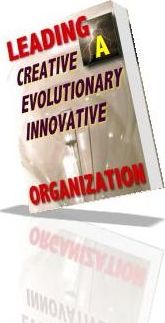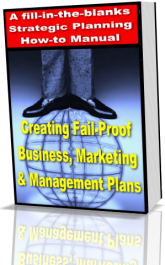3 STEPS YOU CAN USE DEVELOPING LEADERS IN YOUR INDUSTRY
By: Stephen Fairley
With the economy bordering on a recession, every company is looking for ways to increase revenues while decreasing costs. Some companies believe one of the easiest ways to do this is to cut their employee training budget. However, businesses interested in long-term viability recognize that to be successful they must continually develop their people, especially their leaders.
According to recent research by the American Society of Training and Development companies with regular employee training consistently outperform companies who do not train their people. In a recent survey we conducted of HR Directors at small, Chicago-based, start-up companies leadership development was reported as their number one professional challenge.
There are many books, seminars and prepackaged programs that claim to help you do this more effectively and efficiently. Most have varying success because they are not customized to meet your company's specific needs. Canned approaches have little lasting effect.
Leadership development is not about reading a book or attending a seminar. Sustained leadership development is a process. It must be tailored to meet your company's specific needs and goals to be successful. Our research indicates there are some common criteria among successful leadership development programs. The best ones promote leadership in three phases:
Plan for Leadership Development.
The first part of planning a leadership program is to examine what you currently have in place.
In order to gauge your efforts, answer the following five questions:
Does your company have a comprehensive plan for developing people?
What are the benefits you would receive from having an effective leadership development program?
What are the estimated costs in turnover, lower productivity, and lower morale to not having one now?
What would a successful leadership development program look like for your company?
How much time, energy, and money are you willing to invest to develop one?
The next planning step is to begin identifying characteristics of people who are already successful leaders in your company. Every company has a unique corporate structure and culture that rewards particular characteristics. The key to building a successful program begins with looking at successful people. Think about the people who are or have been most successful at your company and ask:
What kind of training experiences have they had?
What kind of educational background do your most successful people have?
How many years of experience in your line of work do they have?
How do they fit in with your corporate culture?
How would you describe their personality style?
What best motivates them?
Practice Leadership Development.
Once you have formed an outline of how you want to develop your leaders and what "success" looks like, you must start implementing the program. Start small, with one or two people. This will allow you to work out the bugs inconspicuously. There are different ways to begin the program, but nearly all successful ones have at least two clear parts: specific leadership training and coaching/mentoring. The training can include elements of:
Effective business communication
Conflict resolution skills
Team building
Relating to different personality styles
Time management
Delegation skills
Goal setting
Critical coaching skills
Other areas specific to your business
The second part is coaching or mentoring. All of the top professional and Olympic athletes recognize the importance of a personal coach to help them reach peak performance. A mentor or coach can provide your leaders with the one-on-one attention needed to help take them to the next level quickly.
Most organizations use some form of sales to drive their product or services. In many of these businesses the sales team leader is the one who does the coaching or mentoring. The majority of these sales leaders are in a position of leadership because they were good at selling. Unfortunately, there is not a direct correlation between being a good salesman and being a good coach or leader. Many leaders have some natural tendencies: they train others how they were trained, they try to motivate other according to how they are motivated, and they tend to miss-focus their energies.
Even the best intentioned sales leaders often display a subtle tendency to focus on two groups of people: the employees who are top performers and those who are under performing. The average performers are usually left to fend for themselves. If sales leaders are aware of this natural tendency, they can usually self-correct it. With some additional coaching, it is easier to help the average performer become a top performer than it is to transform the under performer. When you have developed a comprehensive training program you can strategize about where your investment of time will result in the best ROI.
An effective mentor or coach can help decrease learning curves. Many businesses have a learning curve in which people at the front of the curve significantly under perform the people at the top of the curve. For example, if you realize that it takes a new sales associate 12 to 18 months to start really performing, how much would it be worth to your company to dedicate a leader to spending one-on-one time coaching with new sales associates if that coaching could decrease their time to optimal performance from 12-18 months to 6-8 months?
Promote Leadership Development.
Once you have refined your program by working with a couple of leaders it's time to start promoting the program.
Start by making it known during the interview process with potential employees. Many small company's use their leadership development program to draw in high-potential applicants that otherwise would go to larger organizations.
Sell your leadership training program to applicants by telling them (and showing them) how invested you are in helping them develop as a leader. The kind of people who do well in small to medium-sized businesses are keenly aware of the importance of self-development. These people will be impressed that you want to make an investment in them.
Start highlighting successful characteristics to your current employees and draw attention to the employees that are doing well. Be careful to point out that your goal is for every employee to be their best.
Work hard not to create an atmosphere of cut-throat competition where one person can win only when another loses. Show every employee how they can succeed.
Use your leaders to coach others and consider bringing in an outside coach to help your leaders coach their employees more effectively.
Summary
Leadership training is absolutely critical to the success of business, especially small to medium sized companies. One of the mantras of the 1990's human potential movement was "people are our most valuable asset." There was a lot of verbal acknowledgement of this truth, but not a lot of companies acted on it. Smart companies are beginning to recognize that leadership development and people training is a process, not an event and this process has bottom line results.
For companies looking to increase their revenues and cut their costs, leadership development is a must. Over the long run companies who develop their leaders and train their people significantly outperform companies who do not.
About the Author
Stephen Fairley, M.A., RCC is the President of Today's Leadership Coaching, a premier executive coaching and training firm, and a Registered Corporate Coach (RCC). Today's Leadership Coaching focuses on Developing Leaders Who Deliver Results. You can contact him at 630-588-0500 or at Stephen@TodaysLeadership.com
2001 by Stephen Fairley. All rights reserved. Please contact author for reprints
| 





